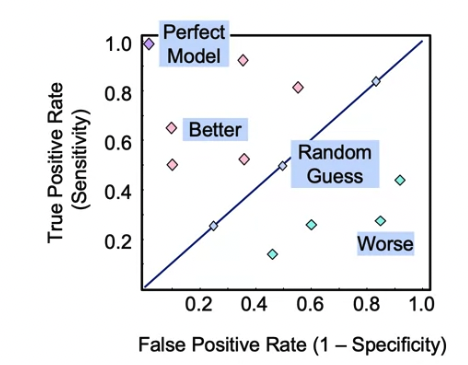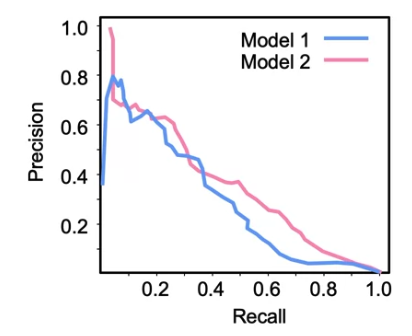Logistic Regression
Tags: Classification, Logistic, Supervised, Week2
Categories: IBM Machine Learning
Updated:
Logistic Regression
Sigmoid function
Apply Sigmoid function to the regression.
And it convert into a odds ratio.
and
from sklearn.linear_model import LogisticRegression
LR = LogisticRegression(penalty='l2', C=1e5)
LR = LR.fit(x_train, y_train)
y_predict = LR.predict(X_test)
LR.coef_
Confusion Matrix
| Predicted True | Predicted False | |
|---|---|---|
| Actual True | TP | FN |
| Actual False | FP | TN |
FN is called type 1 error, and FP is called type 2 error.
Accuracy is the ratio of correct predictions to all predictions.
Sensitivity, Recall Correctly predict the positive class. What percentage is captured true
Precision is, out of all positive predictions, how many are correct. Trade off between recall and precision.
Specificity is how correctly predicted the negative class. Recall for class 0.
F1 is the harmonic mean of precision and recall. It captures trade off between recall and precision.
Classification Error Metrics
ROC
Receiver Operating Characteristics is a scatter Plot of True
Positive Rate (TPR, Sensitivity) and False
Positive Rate (FPR 1-Specificity).
Better when data with balanced classes.

Precision-Recall Curves
Trade off between precision and recall.
Better for data with imbalanced classes.

Multiple Class Error Metrics
Accuracy $= \frac{TP1+TP2+TP3}{Total}$
Code
from sklearn.metrics import accuracy_score
accuracy_value = accuracy_score(y_test, y_predict)
from sklearn.metrics import precision_score, recall_score, f1_score, roc_auc_score, confusion_matrix, roc_curve, precision_recall_curve

Leave a comment